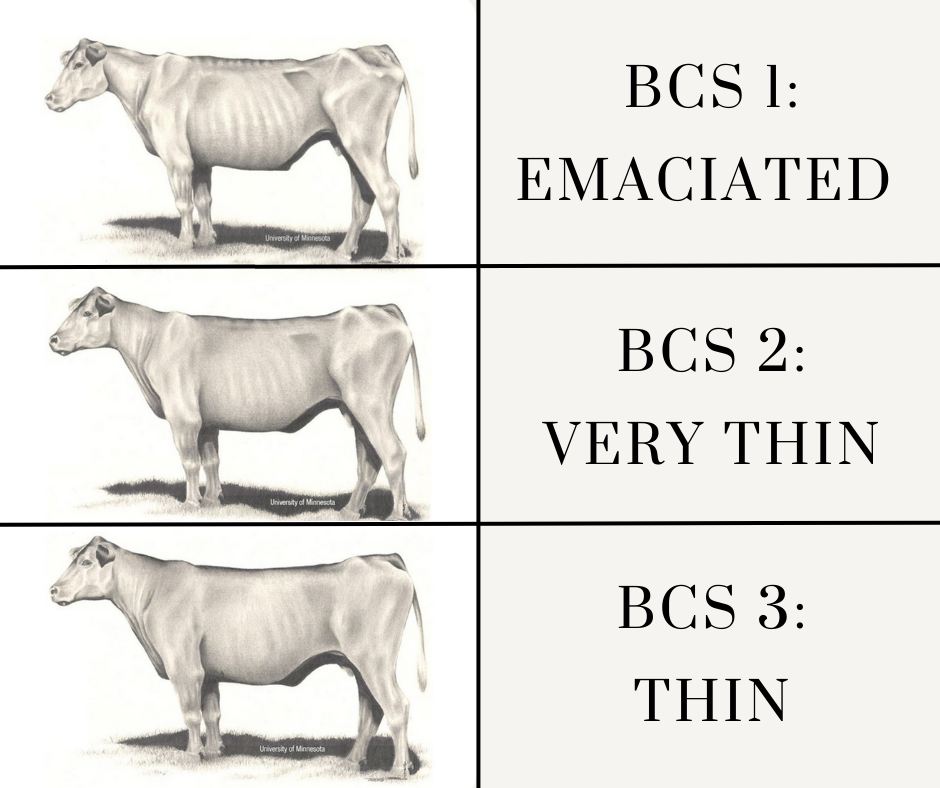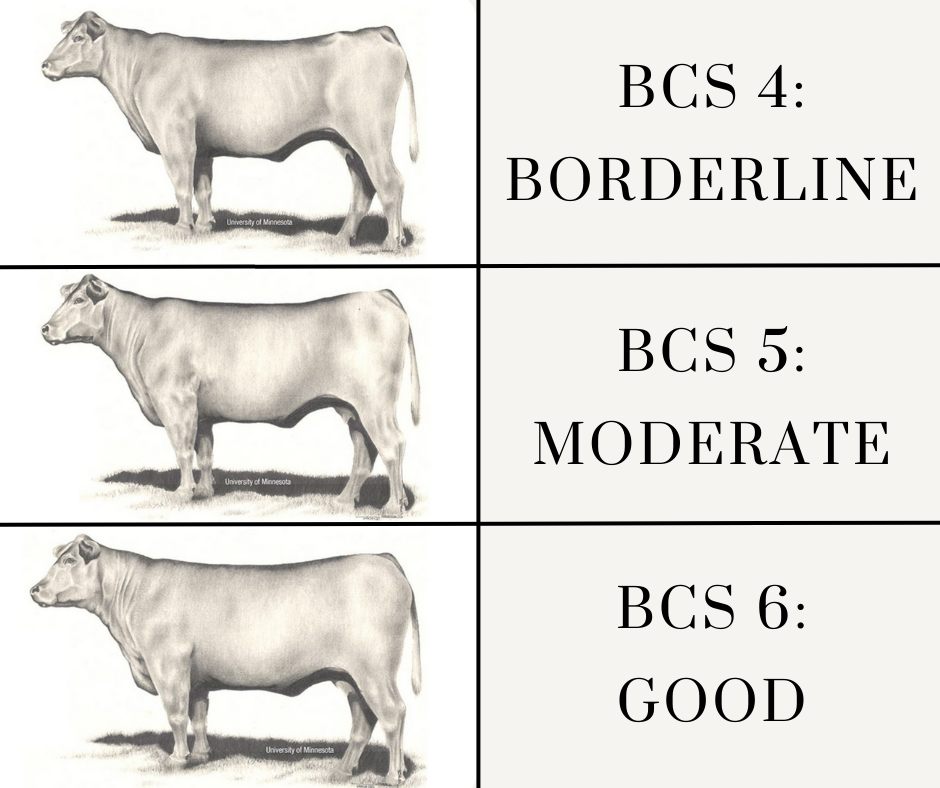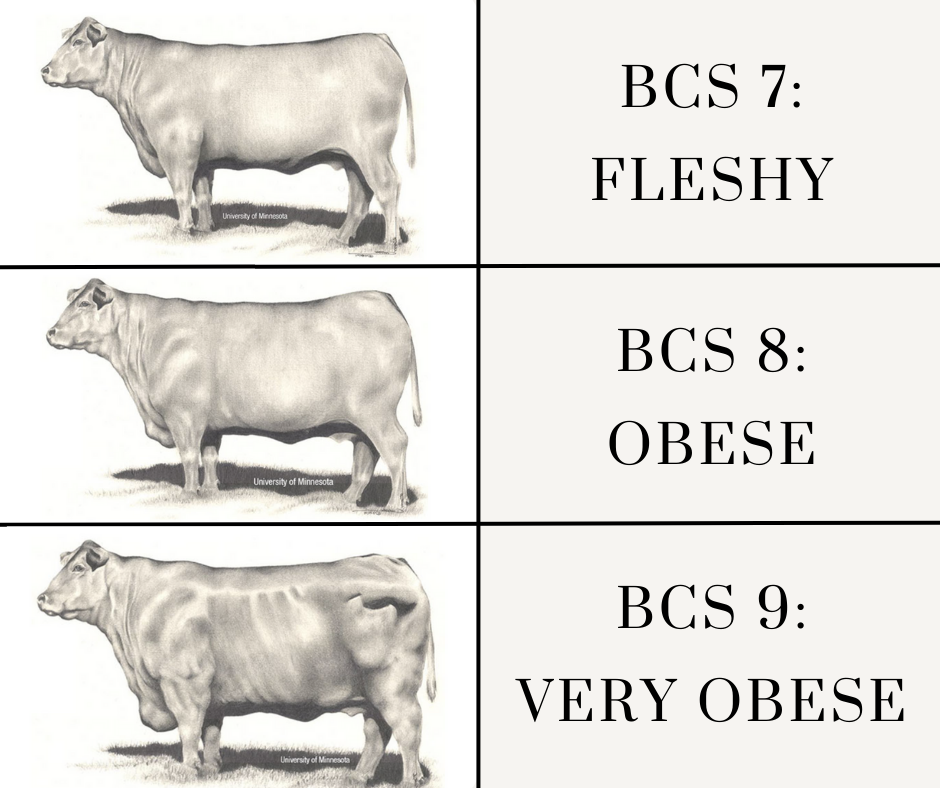
Beef Cattle Body Condition Scoring BCS



It seems like has become winter over the weekend in Mississippi and across most of the United States! So, for this post we are focusing on preparing your herd for nutritional and reproductive success over the winter.
Over the winter months, forage quality and quantity decrease. Lack of nutrient availability paired with weather stress will lead to cows losing weight. This is particularly concerning in spring-calving cows as a reduction in body condition will result in impaired calf health and cow reproductive success.
To determine supplementation requirements for a herd, body condition scoring (BCS) is done by visually observing the relative body fat reserves on a beef cow. The typically scoring system is on a scale from 1-9, with 1 being an extremely thin cow and 9 being an extremely overweight animal. The best way to determine body condition is to handle cows and palpate the ribs, back, backbone, and tailhead. Visual observation can also be used, specifically focus on the visibility of the ribs and pelvic bones. The ideal BCS for a cow going into breeding season is a 5.
Good practices are to determine the body condition of your herd 3-4 months prior to calving. Forage and concentrate supplementation should be adjusted so many animals are at a BCS of 6 prior to calving because cows will typically lose 1 BCS after calving and the start of lactation. It is important to recognize it takes between 40-55 days for BCS to increase by 1 unit at a rate of 1.5-2.0 lbs per day. Thus, we encourage cattle producers to take the time to body condition score their herd over the next weeks to prepare for winter supplementation requirements and set up their herd for future reproductive success.

|
|
|